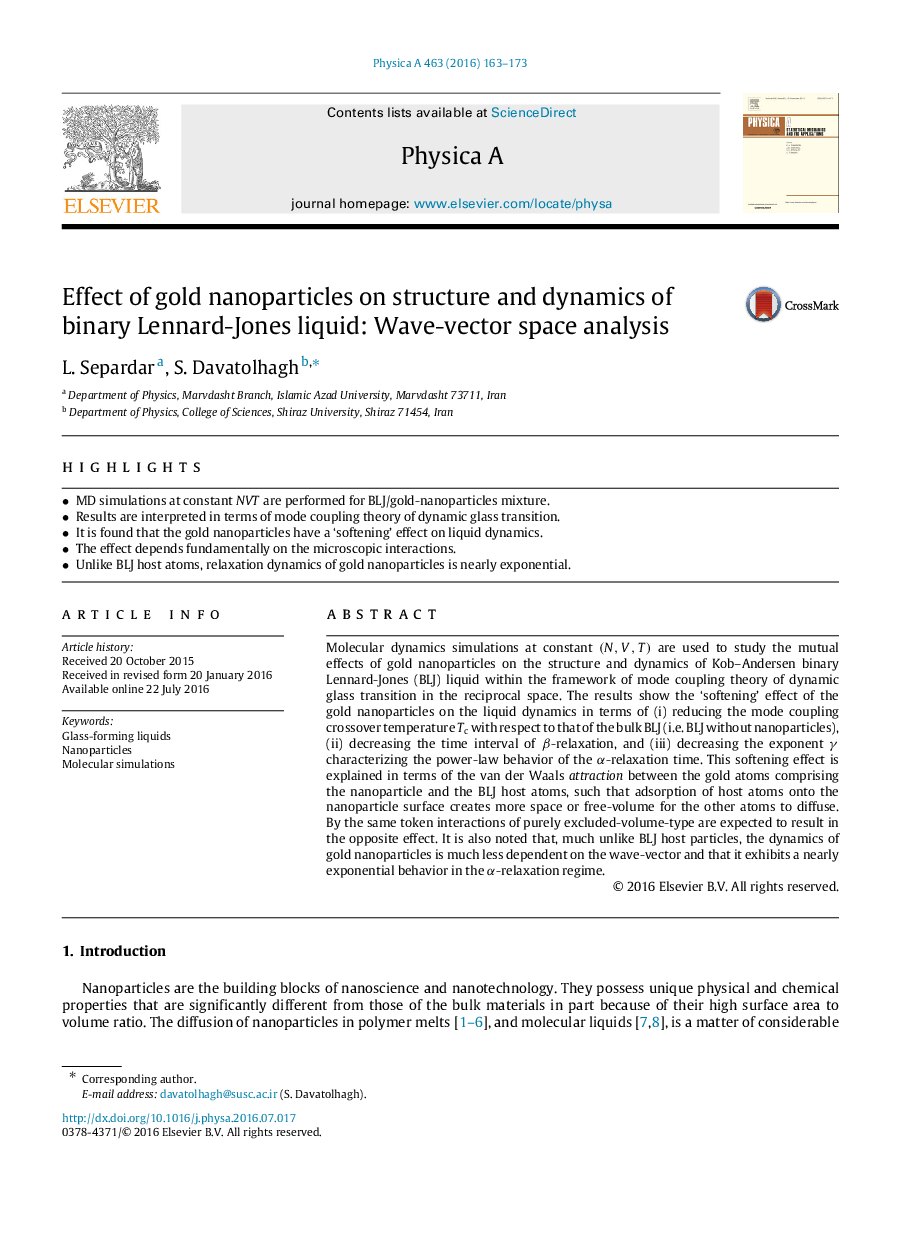| Article ID | Journal | Published Year | Pages | File Type |
|---|---|---|---|---|
| 973932 | Physica A: Statistical Mechanics and its Applications | 2016 | 11 Pages |
•MD simulations at constant NVT are performed for BLJ/gold-nanoparticles mixture.•Results are interpreted in terms of mode coupling theory of dynamic glass transition.•It is found that the gold nanoparticles have a ‘softening’ effect on liquid dynamics.•The effect depends fundamentally on the microscopic interactions.•Unlike BLJ host atoms, relaxation dynamics of gold nanoparticles is nearly exponential.
Molecular dynamics simulations at constant (N,V,T)(N,V,T) are used to study the mutual effects of gold nanoparticles on the structure and dynamics of Kob–Andersen binary Lennard-Jones (BLJ) liquid within the framework of mode coupling theory of dynamic glass transition in the reciprocal space. The results show the ‘softening’ effect of the gold nanoparticles on the liquid dynamics in terms of (i) reducing the mode coupling crossover temperature Tc with respect to that of the bulk BLJ (i.e. BLJ without nanoparticles), (ii) decreasing the time interval of ββ-relaxation, and (iii) decreasing the exponent γγ characterizing the power-law behavior of the αα-relaxation time. This softening effect is explained in terms of the van der Waals attraction between the gold atoms comprising the nanoparticle and the BLJ host atoms, such that adsorption of host atoms onto the nanoparticle surface creates more space or free-volume for the other atoms to diffuse. By the same token interactions of purely excluded-volume-type are expected to result in the opposite effect. It is also noted that, much unlike BLJ host particles, the dynamics of gold nanoparticles is much less dependent on the wave-vector and that it exhibits a nearly exponential behavior in the αα-relaxation regime.
